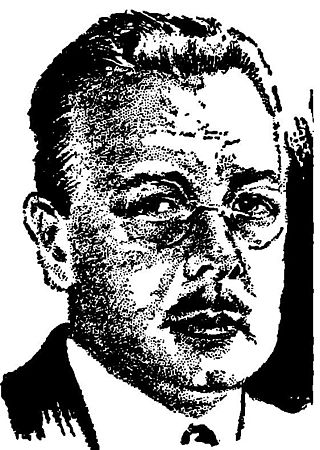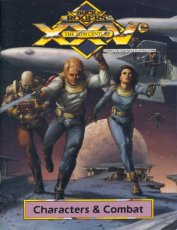Forgotten Realms is a campaign setting for the Dungeons & Dragons (D&D) fantasy role-playing game. Commonly referred to by players and game designers as "The Realms", it was created by game designer Ed Greenwood around 1967 as a setting for his childhood stories. Several years later, it was published for the D&D game as a series of magazine articles, and the first Realms game products were released in 1987. Role-playing game products have been produced for the setting ever since, in addition to novels, role-playing video game adaptations, comic books, and the film Dungeons & Dragons: Honor Among Thieves.

Spelljammer is a campaign setting originally published for the Advanced Dungeons & Dragons role-playing game, which features a fantastic outer space environment. Subsequent editions have included Spelljammer content; a Dungeons & Dragons 5th edition setting update was released on August 16, 2022.

TSR, Inc. was an American game publishing company, best known as the original publisher of Dungeons & Dragons (D&D). Its earliest incarnation, Tactical Studies Rules, was founded in October 1973 by Gary Gygax and Don Kaye. Gygax had been unable to find a publisher for D&D, a new type of game he and Dave Arneson were co-developing, so he founded the new company with Kaye to self-publish their products. Needing financing to bring their new game to market, Gygax and Kaye brought in Brian Blume in December as an equal partner. Dungeons & Dragons is generally considered the first tabletop role-playing game (TTRPG), and established the genre. When Kaye died suddenly in 1975, the Tactical Studies Rules partnership restructured into TSR Hobbies, Inc. and accepted investment from Blume's father Melvin. With the popular D&D as its main product, TSR Hobbies became a major force in the games industry by the late 1970s. Melvin Blume eventually transferred his shares to his other son Kevin, making the two Blume brothers the largest shareholders in TSR Hobbies.
Jeff Grubb is an author of novels, short stories, and comics, as well as a computer and role-playing game designer in the fantasy genre. Grubb worked on the Dragonlance campaign setting under Tracy Hickman, and the Forgotten Realms setting with Ed Greenwood. His written works include The Finder's Stone Trilogy, the Spelljammer and Jakandor campaign settings, and contributions to Dragonlance and the computer game Guild Wars Nightfall (2006).

Gold Box is a series of role-playing video games produced by SSI from 1988 to 1992. The company acquired a license to produce games based on the Advanced Dungeons & Dragons role-playing game from TSR, Inc. These games shared a common game engine that came to be known as the "Gold Box Engine" after the gold-colored boxes in which most games of the series were sold.

Philip Francis Nowlan was an American science fiction writer, best known as the creator of Buck Rogers.

Buck Rogers: Countdown to Doomsday is a role-playing video game set in the Buck Rogers XXVC universe. It was published in 1990 by Strategic Simulations for MS-DOS, Commodore 64, and Amiga. A Sega Genesis version was released in 1991. Buck Rogers: Matrix Cubed is the 1992 sequel.

Buck Rogers: Matrix Cubed is a role-playing video game for MS-DOS developed and published by Strategic Simulations 1992. It uses the Gold Box engine. The game takes place in the Buck Rogers XXVC campaign setting. Matrix Cubed is a sequel to Countdown to Doomsday which came out in 1990.
Nigel D. Findley was a Canadian game designer, editor, and an author of science fiction and fantasy novels and role-playing games (RPGs).

Buck Rogers: A Life in the Future is the title of a science fiction novel by Martin Caidin published in 1995.
Michael S. Dobson is an American author in the fields of business, alternate history novels and role-playing game adventures.
Lorraine Dille Williams is an American businesswoman. She was hired as manager of TSR, Inc. by company co-founder Gary Gygax in 1984, and was in charge of the table game company from 1986 to 1997. Williams gained control of TSR in October 1985 when the Blume brothers sold her their controlling shares of the company. In 1996, an unexpectedly high cost of returned (unsold) fiction books and an expensive, unsuccessful foray into the collectible card game market caused a cash flow squeeze, and Williams sold TSR to Wizards of the Coast in 1997.
Steven E. Schend is an American game designer and editor who has worked on a number of products for the Dungeons & Dragons fantasy role-playing game from TSR throughout the 1990s.
Flint Dille is an American screenwriter, game designer and novelist. He is best known for his animated work on Transformers, G.I. Joe, An American Tail: Fievel Goes West, and his game-writing, The Chronicles of Riddick: Escape from Butcher Bay, and Dead to Rights, as well as a non-fiction book written with John Zuur Platten, The Ultimate Guide to Video Game Writing and Design .
Buck Rogers is a science fiction adventure hero and feature comic strip created by Philip Francis Nowlan first appearing in daily U.S. newspapers on January 7, 1929, and subsequently appearing in Sunday newspapers, international newspapers, books and multiple media with adaptations including radio in 1932, a serial film, a television series, and other formats.
Dale "slade" Henson is a game designer who has worked primarily on role-playing games.

The High Adventure Cliffhangers Buck Rogers Adventure Game was a role-playing game published by TSR in 1993.








